REVIEW OF THE HAIDA M10 FILTER SYSTEM AND 6 & 10-STOP NEUTRAL DENSITY FILTERS
From: DIY PHOTOGRAPHY
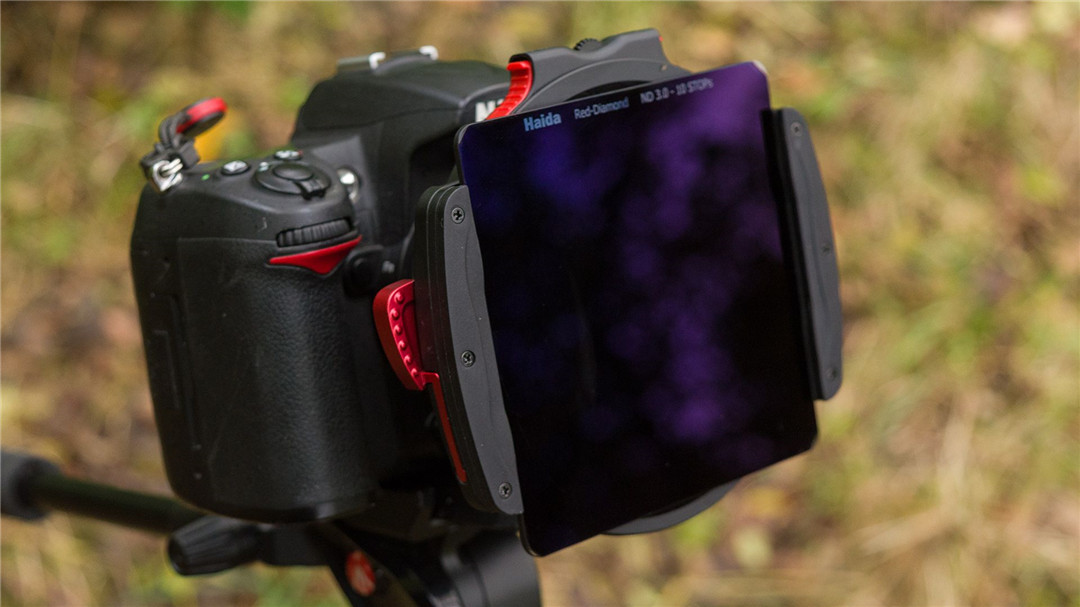
Although many lens filters were pretty much eradicated by the advent of digital photography, there are two which still hold a lot of value that can't really be accurately replicated in Photoshop. Those are polarizers and neutral density filters. You can try, but you'll never get it looking exactly like the real thing.
Recently, I've been trying out Haida's M10 filter system, along with their circular polarizer, 6-stop M10 drop-in ND filter and the 100x100mm square 10-stop Red Diamond ND filter. The weather's been kind of crappy here in Scotland lately, but I did get out to give them a try and do some slightly more objective tests, too. Here's what I found out and what I think.
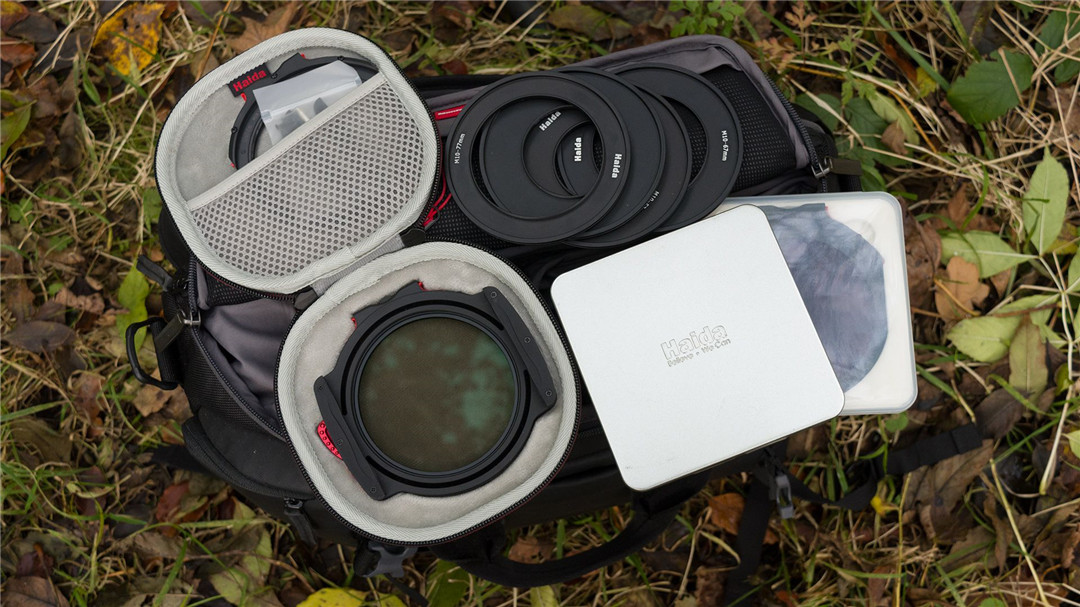
FIRST IMPRESSIONS
The Haida M10 filter holder kit comes supplied with a circular polarizing filter and is supplied in a rigid zip-up case, with a very soft furry interior. One half of it contains the holder with the polarizer filter and lens mount ring attached.
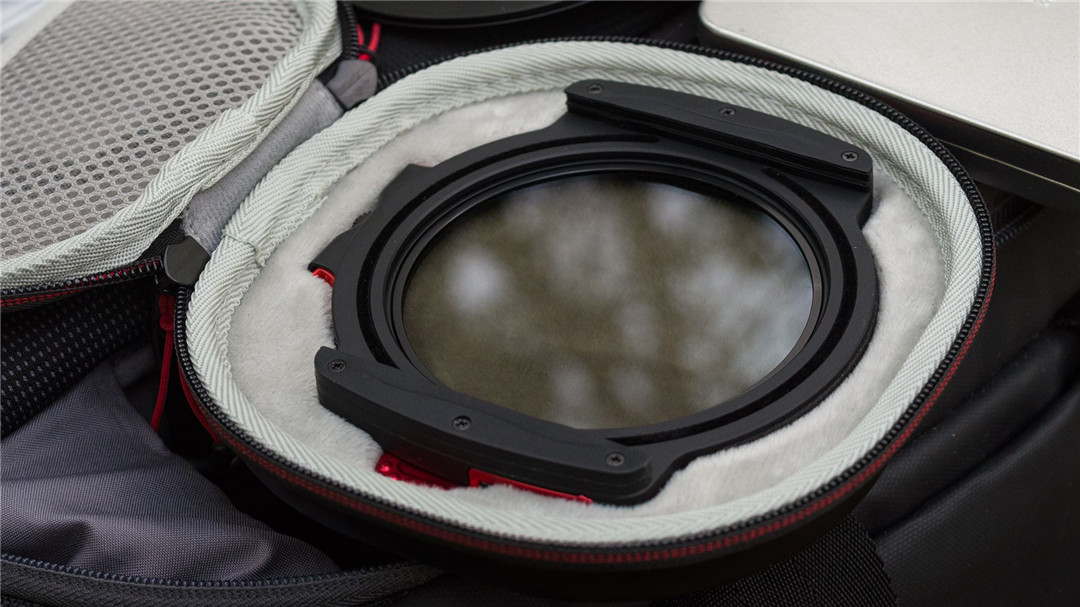
The other half has a webbed pouch containing an extra pair of ribs and some longer screws in case you want it to hold more filters (we'll get back to that), along with a drop-in "blank" gasket. The blank is designed to block stray light from entering the holder behind the square filters you may wish to place on the front when not using the polarizer.
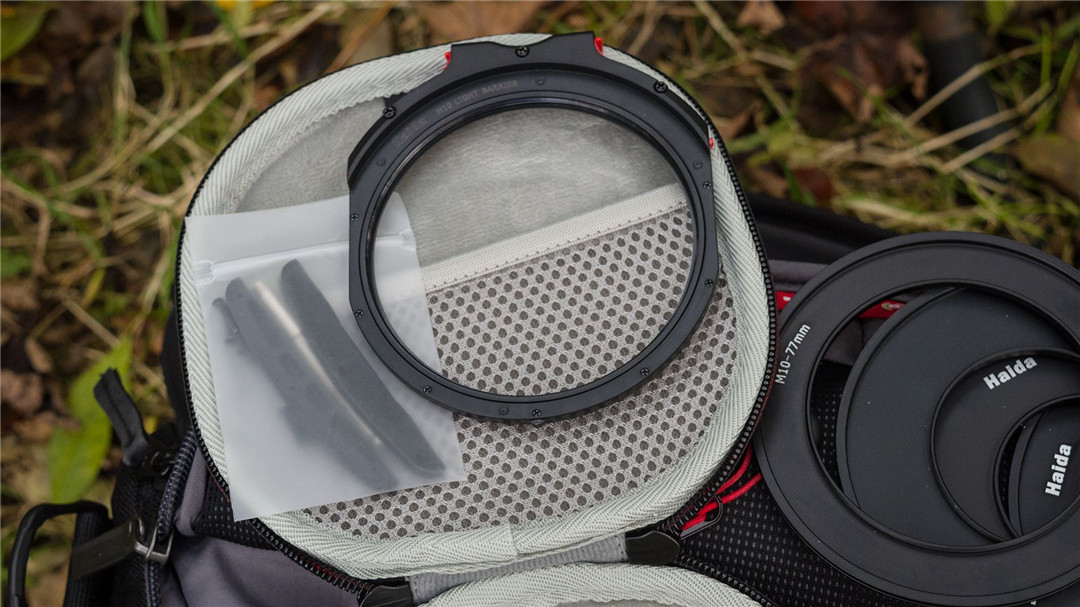
Also included with the Haida M10 holder is a single lens adapter, available in all of the usual filter thread diameters. I opted for the 77mm but also received 67mm, 58mm and 52mm adapters for my other commonly used lenses. There's nothing to stop you simply using step-up rings with the 77mm adapter, but with ultra-wide-angle lenses, having the holder that bit further from the front of the lens due to a step-up ring does increase the chance that it will appear in the shot.
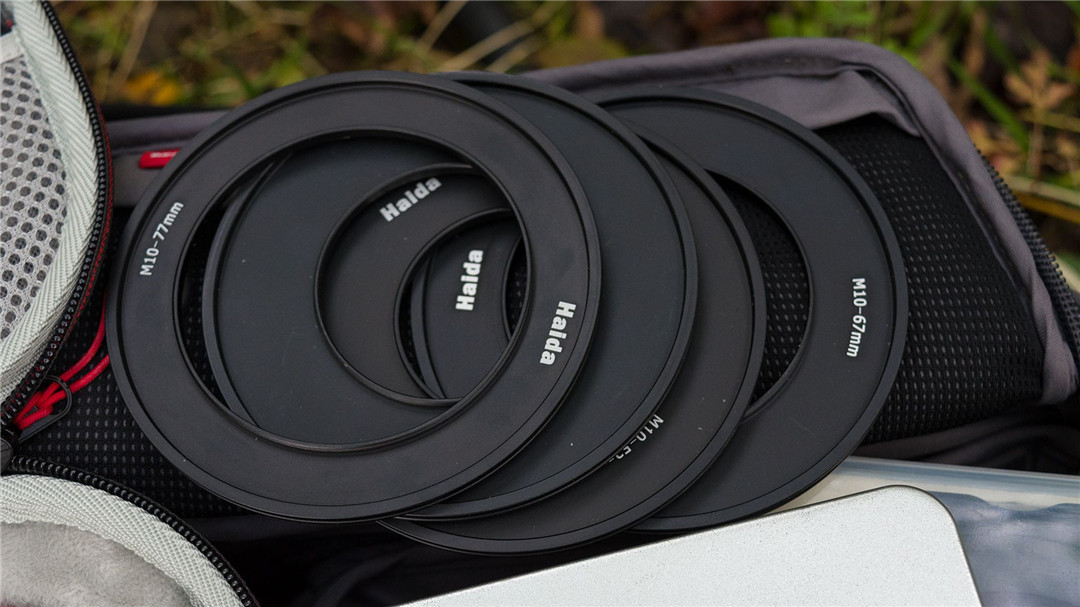
The M10 holder itself features a quick-release system for quickly putting it on and taking it off the filter adapter on the front of your lens. This was the first time I'd used an adapter with such a quick-release mechanism. With my Cokin Z-Pro, you had to slide the whole thing off or onto the adapter ring. If you wanted to shoot with a 10-stop ND and wanted to pre-focus without filters (so you could see the scene) and then add the filters, that process increases the risk of moving the camera or knocking the focus or (if applicable) zoom.
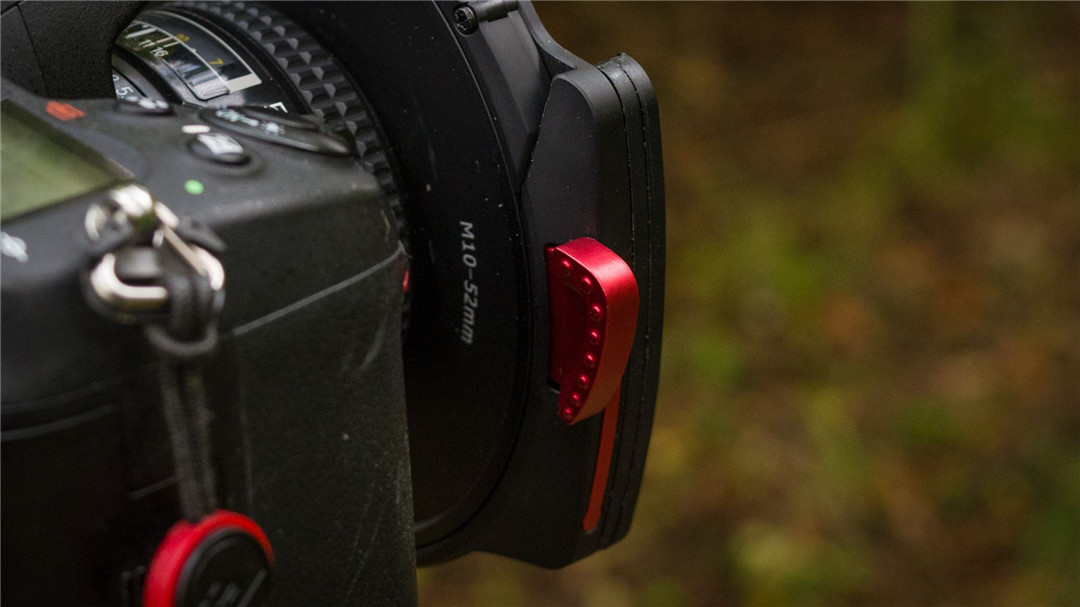
With a quick-release lever, contact with the camera is fairly minimal, reducing that risk. The polarizing filter also is inserted into and removed from the holder via a quick-release system of sorts, too. Two levers on top allow you to easily slide the polarizer out with the minimal effort. The replacement "blank" also uses the same quick-release feature for insertion and removal. Overall, things slide in and out very smoothly and easily, also minimizing the risk that you'll knock the camera, focus or zoom in the process.

The 6-stop ND filter uses this quick-release system, too, which again makes it easy to slip in and take out. The only drawback here is that you can't use the 6-stop ND filter along with the polarizer at the same time. That being said, Haida also makes drop-in M10 NDs with built-in polarizers, too. The 10-stop ND, on the other hand, is the more traditional 2mm thick 100x100mm square filter. This slides into the ribs directly in front of where the polarizer slots in.
One thing I was quite surprised about with the 10-stop ND filter was that it appears to reflect blue on both the front and the back while the 6-stop appears to reflect a more reddish-orange colour. We'll see how that affects the shot colour later, though.
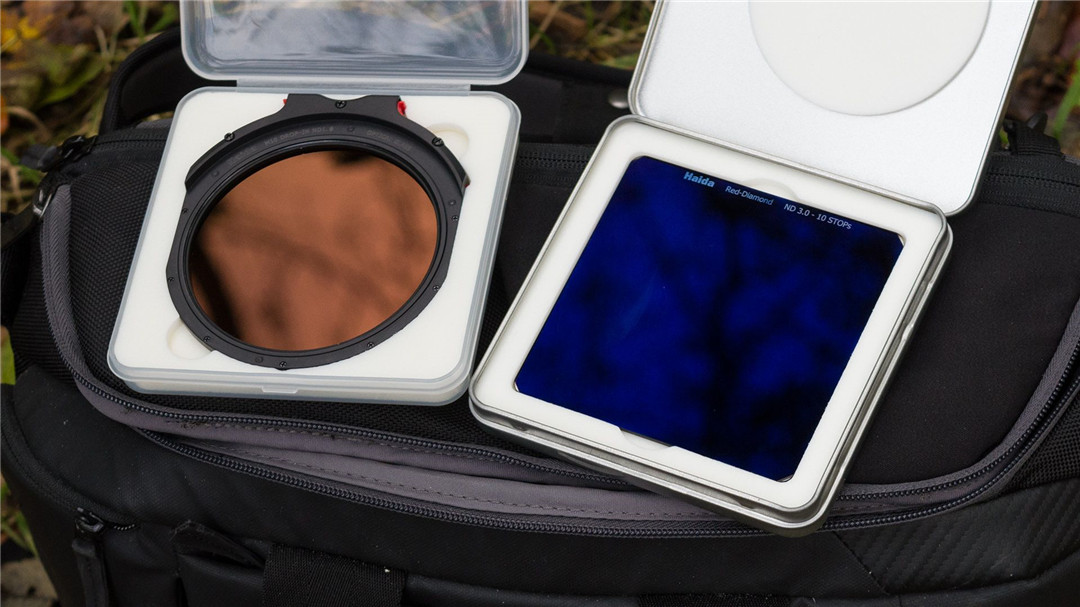
Looking at the holder itself, though, is where we see the first thing that made me go "huh, that's cool". On the holder, there is a felt ring that holds the first filter slot snugly to the holder. Well, technically, it's two feet semicircles rather than a complete ring. These help to eliminate the risk of light leaks coming in from behind the filter. Light leaks are something I've experienced with other holders when using strong (8-10 stop) ND filters. You don't really notice it on a quick shot, but over time on a 2 or 3-minute exposure, it builds up and you do see it in the final exposure. Often it results in the front lens element reflecting off the inside surface of the ND. There shouldn’t be a problem with that here, though.

You will want to make sure, though, that the rear side of any square filters you place in here is perfectly clean before you do so. The last thing you want is to have a grain of sand get caught in the feeling and scratch the back of the filter as you slide it in.
FIRST USE
Before doing some objective tests, I decided to just head out the door during a break in the rain to see how they performed and how easy they were to work with, out on location. So, I picked up a bag and headed out into the woods. With the holder and each of the two filters coming in their own case, they're fairly well ensured to be protected while wandering around in the wilderness. The case for the holder itself is nice. A pair of zips keep the two halves closed and there are loop straps on both of the zips to slip your finger into – very handy when it's cold!
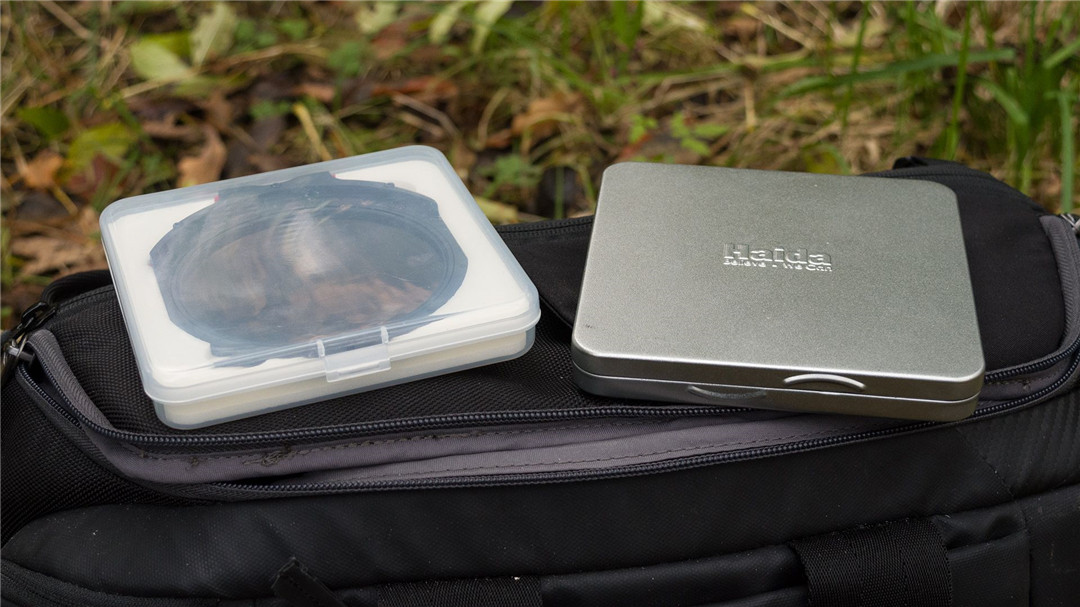
The case for the 6 stop ND is plastic and has a locking tab that sticks out over one end to let you easily grip and open it. On pressing the case closed, it locks well. The 10-stop ND case, on the other hand, isn't something I'm a fan of. It's metal, which looks really nice, but it's not always the easiest to open. And if you're in the middle of nowhere and your fingers are cold and wet or you're wearing gloves, then it can be very difficult.

Other than that, though, using the filters was a pleasant experience. The quick-release lever on the M10 holder allowed me to easily take the holder off and put it on when needed, and the quick release on the polarizer and 6-stop ND let me swap those out at will with no issues. The 10-stop filter was sometimes a little awkward to put on after I'd rotated the polarizer to the angle I needed it, but that was a minor inconvenience, really.
I didn’t shoot much that day, due to the weather, but here is a comparison of four shots of the same scene. The top left is just the bare lens. The top right is with just the polarizer. The bottom left is with the 6-stop ND filter and bottom right is with the polarizer and the 10-stop ND filter. The white balance and settings for all four of the shots except for the shutter speed are the same, although I did have to open up the aperture from f/8 to f/4 for the 10-stop shot, though, due to the 30-second shutter speed limit on the camera I used. If I had an external timer with me, the correct exposure at f/8 would have been two minutes
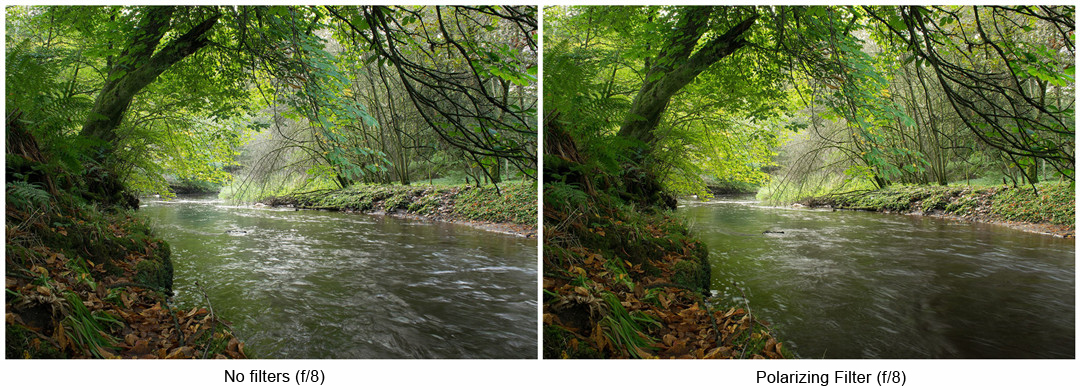

The polarizing filter, like many others on the market, offers some slight warming to the image. This is mostly due to the fact that it's eliminated many of the cool reflections on leaves, water, and branches coming from the sky. What surprised me, is that the blue is shown on the front and rear surfaces of the 10 stop ND filter doesn't seem to introduce any overly strong blue cast to the resulting images.
There were also no obvious major vignetting issues, either, whether I was using one filter or two in combination. I would've tried the 6 and 10 stop filters combined if I'd had a remote shutter with me that would let me go longer than 30 seconds on the shutter, but I didn't. It's very rare that I need to go as high as 16-stops of neutral density, but there are a couple of specific use cases where the ability to turn 1/30th of a second into half an hour can be very useful. So, I might give this a go at some point in the future once the weather clears up a bit.
Overall, the experience of using the Haida filter set on location worked well, and the quick-release system for both the holder and the polarizer was very useful. It allowed me to line up and focus my composition without any filters on the lens (so that I could actually see through the viewfinder), and then easily slip the NDs over to extend the exposure without knocking the camera out of whack.
A LOOK AT COLOUR
One of the big complains about many neutral density filters is color casts. With the 10-stop ND, I've already mentioned the blue coating on both the front and back of the filter which didn't appear to really impact the shot to any negative degree, but let's have a little more of an objective look at the color.
I set up my ColorChecker Passport and ColorChecker Video under 97+ CRI LED lights in order to create somewhat consistent test conditions. I used my Sekonic L758DR to set up a baseline exposure for my camera using no filters whatsoever and took a shot of both to get an unfiltered white balance reading.
Then I tested each of the filters in turn, compensating with the shutter speed until the histograms matched the original shot. This allowed me to see exactly how many stops of light the polarizer was taking away, as it's not mentioned on the Haida website, and also to see how close the 6 and 10-stop filters were 6 and 10-stops.
So, here's the bare shot of the scene. This is our "control" shot. The white balance here was set from the lighter of the two big grey swatches on the ColorChecker Video and is set to 4700K with a +14 tint.
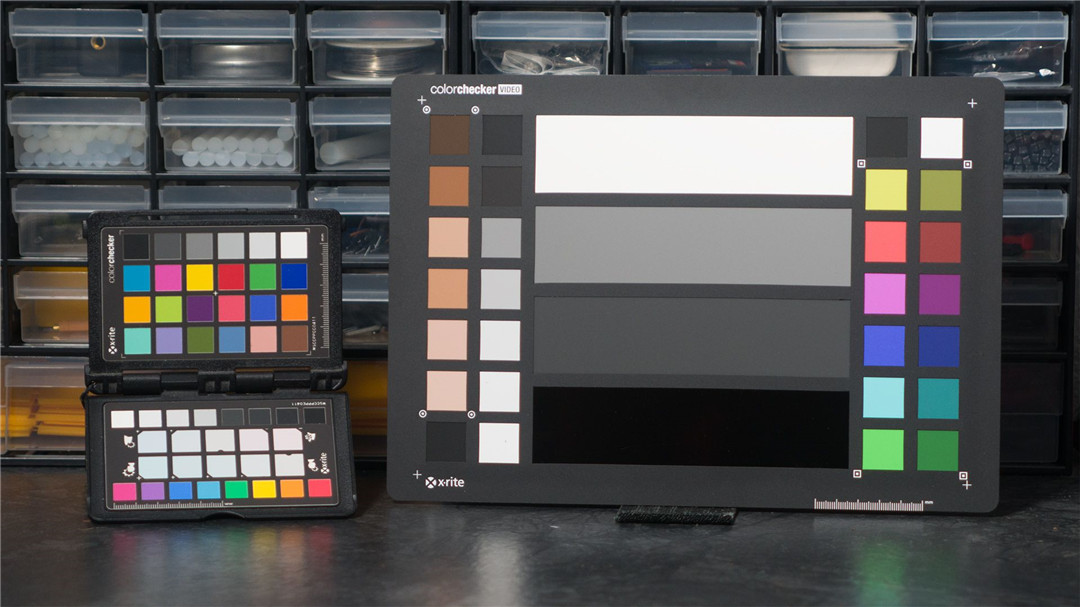
ISO400, f/4, 1/30th
Here we are with the polarizer set to maximum effect. I compensated for a 1 stop light loss, which is what my camera's meter was zeroing back out at. In Adobe Camera RAW, I bumped it up another 0.1 stops of exposure in order to get the lighter grey swatch to match the control shot above. So, while it technically dropped 1.1 stops in this instance, I think it'd be a pretty safe bet to call this a stop for practical use.

The 6-Stop drop-in ND filter offered more of a color change than I anticipated. It's still not a huge difference, but it's a little warmer and a little more magenta, leading to a 300K increase in temperature and a -15 difference in tint. You can see that I applied for zero exposure compensation here. Six stops on the nose.

The 10-Stop Red Diamond ND filter. I was really impressed by just how closely this shot matched the control in color. I've tried a number of 10-stop NDs over the years, and many of them result in pretty strong (often magenta) color casts. Here, the difference is quite minimal, with only 50K and a +2 tint adjustment between them. I did have to drop the exposure of the 10-stop down 0.3 stops in order to match the exposure of the control shot. This results in an actual reduction of 9 2/3rds of a stop. But I've yet to see a 10-stop ND that's absolutely perfect.

The polarizer and the 10-stop ND filter together. Here, too, the combination works together very well, with very little adjustment in the white balance or tint. We go 200K warmer on the color temp and +1 on the tint. Exposure wise, when we add the 9 2/3rds of a stop of the 10-stop ND and the 1 1/10th stop of the polarizer, we get a hair under 11 stops. The final shot was adjusted -0.1EV in Adobe Camera RAW to match the control.

Looking at all of these images, the differences are quite minimal. Even when you look at the "control" white balanced versions next to the fixed white-balance versions side-by-side, being able to spot the difference is difficult. And that slight difference is easily correctable in the post if you want things to be absolutely spot on. But, as we know, photography, and particularly when it comes to landscapes, white balance is a somewhat subjective tool in our editing process. But it's certainly not something I'd worry about with these filters from Haida.
When it comes to sharpness, these are about as sharp as any other ND or polarizing filters I've used. There is a slightly noticeable difference when comparing no filter vs filter at 100%, but I don’t find that it degrades the image any more than my other ND and polarizing filters. When scaled to more reasonable sizes or printed, you likely wouldn't be able to notice any difference.
CONCLUSION
It's a nice and well thought out system, overall. The quick-release is fantastic for getting the holder on and off so you can switch it between multiple cameras, or use multiple M10 filter holders with different filter configurations already set up and ready to go. The drop-in filters are very handy indeed if you need to make a quick change, and if Haida's other Red Diamond filters are as good as the 10-stop, they complement the supplied polarizer very well.
The only thing I'm not really a huge fan of is that metal tin case on the square filter. Such filters are typically going to be used when shooting landscapes, which is often a pretty cold environment. If it's wet and your hands are cold or in gloves, then trying to open them gently is difficult. If you're struggling to open them, the chances of them just springing open and sending the filter flying is high. So, while the presentation of the metal case is excellent, for practical purposes, I'd rather see plastic cases like the drop-in filters. If it becomes a big concern for you, though, Haida does make a 6-slot filter pouch, too.
While there are a lot of options out there now when it comes to the filter systems, the Haida seems to do very well. It's quick and easy to use and the filters themselves, fairly consistent when it comes to color – certainly consistent enough that differences are easily correctable if you can even spot them – and they are sharp enough to compete with more expensive systems.
Related News
- REVIEW OF THE HAIDA M10 FILTER SYSTEM AND 6 & 10-STOP NEUTRAL DENSITY FILTERS
- Haida Picture Appreciation | November 2025
- Haida NanoPro Magnetic Filter Kit for Digital Camera
- Haida Carbon Fiber Protective Plate
- Haida New Filter Kits for DJI Mini 5 Pro and Mavic 4 Pro
- Haida Picture Appreciation | October 2025
